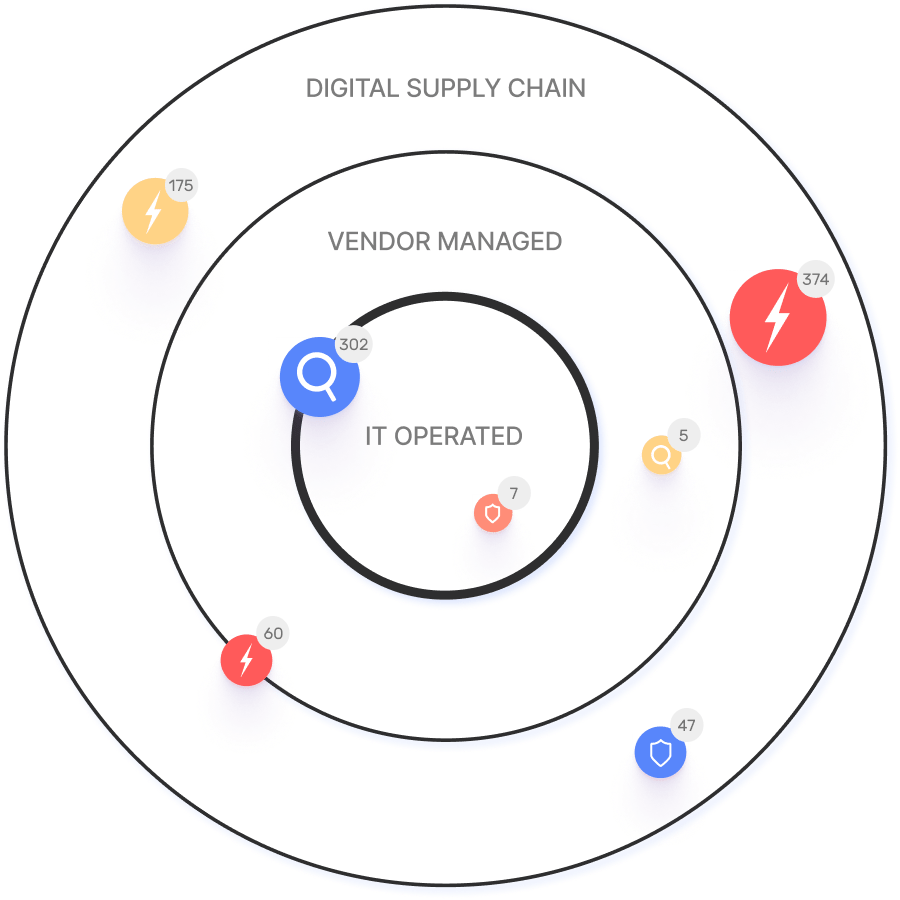The Different Types of Vulnerability Scanning Tools
Vulnerability scanning provides organizations with valuable insight into the various software vulnerabilities within their digital attack surfaces. However, diverse corporate attack surfaces and the wide range of potential vulnerabilities that they contain require companies to have certain capabilities and scanning tools in place.
In this article
What is vulnerability scanning?
Vulnerability scanning is the use of automated tools to identify potential vulnerabilities in an organization’s digital attack surface. These tools look for software that contains common vulnerabilities and known Common Vulnerabilities and Exposures (CVEs).
Vulnerability scanners provide a list of identified vulnerabilities prioritized using the Common Vulnerability Scoring System (CVSS). Using this information, IT and security teams can apply patches and take action to close these security gaps.
How to choose a vulnerability scanner
Vulnerability scanners are designed to identify potential software vulnerabilities within an organization’s environment. However, modern IT networks include a wide variety of IT assets, applications, and infrastructure, all of which have their own security requirements and leading threats.
When selecting a vulnerability scanner, it’s important to consider the organization’s environment and key metrics for a “successful” vulnerability scan. For example, an organization with a primarily cloud-based environment may need a different tool than one that hosts its own data center. The choice of the “right” tool may also be influenced by factors such as the rate of false positives generated by a particular tool and the security team’s ability to investigate and resolve these issues.
Top vulnerability scanning tools by type
Vulnerability scanners are developed for a range of different purposes. Some of the top vulnerability scanners in various categories include the following:
CAASM
Cyber Asset Attack Surface Management (CAASM) tools attempt to map the assets that make up an organization’s external digital attack surface. Some top CAASM solutions include:
- Threat Aware: Threat Aware is an agentless, API-based solution that identifies shadow IT, security gaps, and misconfigurations that introduce potential security risks.
- Axonius Cyber Asset Management Platform: Provides a range of ASM capabilities within a single platform with comprehensive asset inventory and automated enforcement of security policies.
- JupiterOne: Uses a graph-based visualization to map relationships between assets, vulnerabilities, and risks in an organization’s environment.
Code Scanning
Code scanning tools focus on identifying potential application vulnerabilities, often as part of a CI/CD pipeline. Some code scanning tools include:
- Invicti (formerly Netsparker): Offers automated and continuous scanning for vulnerabilities in websites and application code.
- StackHack: Dynamic application security testing (DAST) tool that can be integrated into automated DevOps CI/CD pipelines.
- Rapid7 InsightVM: Offers live vulnerability monitoring and a range of automation and reporting features to aid vulnerability remediation.
Container Scanning
Container scanning tools inspect container images and filesystems for potential vulnerabilities. Some examples include:
- Trivy: Comprehensive vulnerability scanning across container images, filesystems, Git repos, Kubernetes, virtual machines (VMs), and cloud services.
- Clair: Open-source tool that looks for CVEs within container images stored locally or in image registries.
- Grype: Grype is a vulnerability scanning tool for container images and filesystems that can also process software bills of materials (SBOMs).
Network Scanning
Network scanning tools are designed to identify the various systems present in a network. Some examples of network scanners include:
- Nmap: Nmap is a widely-used network scanner capable of identifying a wide range of operating systems and applications via port scanning and banner grabbing.
- Nessus: A vulnerability scanner with a range of capabilities, including port scanning, service enumeration, and vulnerability checks.
- OpenVAS: A comprehensive vulnerability scanner that is built into Greenbone Vulnerability Manager.
Web Application Scanning
Web application scanners specialize in identifying common vulnerabilities in web applications, such as SQL injection and cross-site scripting (XSS). Some examples include:
- Acunetix: Acunetix is a specialized web application security testing tool capable of identifying thousands of common vulnerabilities.
- Burp Suite: Burp Suite offers a wide range of potential capabilities, including vulnerability scanning functionality.
- OWASP ZAP: OWASP Zed Attack Proxy (ZAP) is an open-source, free vulnerability scanner and security testing tool.
Challenges of vulnerability scanning
Vulnerability scanning is a useful practice, but it comes with significant challenges. Some of the most common issues that security teams face include:
- Asset Discovery: Vulnerability scanners can only identify vulnerabilities in the assets that they can see. Asset discovery can be a significant challenge that limits the effectiveness of vulnerability scanning.
- Diverse Infrastructures: Corporate IT environments commonly contain a wide range of IT assets, including servers, mobile devices, Internet of Things (IoT) devices, and cloud-based workloads. A vulnerability management program needs visibility into all of these systems to comprehensively inventory an organization’s digital attack surface.
- Scan Visibility: A vulnerability scanner’s visibility may be impacted by various factors, such as the scan location, whether the scan is credentialed or noncredentialed, and the presence of transient systems (containers, microservices, etc.). All of these factors contribute to the completeness and utility of the vulnerability scan.
- False Positives: Vulnerability scanners typically don’t exploit the vulnerabilities that they identify, which can lead to false positive detections. Vulnerability validation is crucial to avoid wasting resources on non-existent threats.
Move from vulnerability scanning to validated exploits with IONIX
Vulnerability scanning is designed to identify software vulnerabilities in an organization’s environment. However, the majority of vulnerability scanners perform no validation of the vulnerabilities that they detect, relying instead on matching software to CVEs. As a result, security teams are burdened with a list of vulnerabilities that may or may not pose any real risk to the business.
Exposure management addresses the same challenges as vulnerability scanning but in a way that maximizes return on investment (ROI) for the business. Exposure management takes an attacker-centric view of the vulnerability detection process, looking for those threats most likely to be exploited by an attacker. Any findings are validated and prioritized based on real business impacts, rather than CVSS scores. As a result, the security team ends up with a much smaller list of verified, prioritized threats.
The IONIX platform provides security teams with the tools that they need to gain control over their real digital attack surface. To learn more about how your team can benefit from validated threat detection and automated remediation, sign up for a demo.


